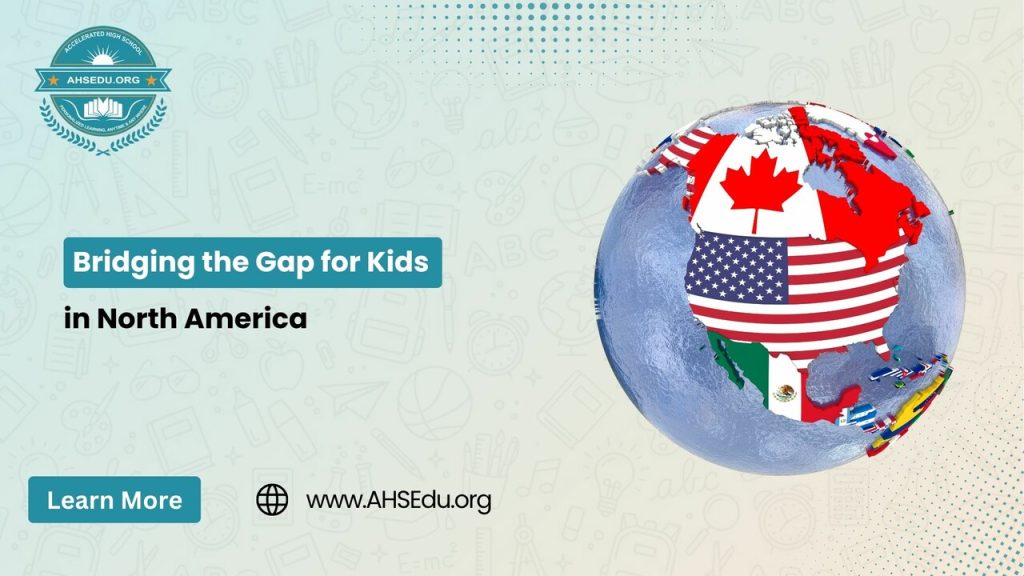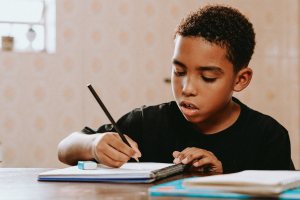
Education equity – the principle of fair and inclusive access to education for all children – remains a pressing issue in 2025. Around the world, the COVID-19 pandemic laid bare existing disparities. At the peak of school closures, 43% of students globally (about 706 million children) had no internet at home, even as education moved online. In fact, two-thirds of the world’s school-age children (1.3 billion kids) still lacked home internet access as of 2020. UNICEF’s director Henrietta Fore described this not just as a digital gap but “a digital canyon,” warning that lack of connectivity isolates children and causes them to lose out on education during crises. These stark global numbers highlight the challenge: when digital access is unequal, so are learning opportunities.
North America is not immune to these inequities. In high-income countries like the United States and Canada, most schools quickly adopted remote learning during the pandemic. Yet millions of children struggled to connect. In the U.S. alone, an estimated 12 million K‑12 students had no internet access at home during the pandemic’s first year. This “homework gap” disproportionately affected disadvantaged groups. Roughly one-third of low-income households with school-aged children lack high-speed internet, compared to only 6% of homes earning over $75,000. Similarly, Black teens were about 3 times more likely than white teens to say they couldn’t complete homework due to unreliable internet. Such statistics underscore that education inequality isn’t just about school funding or teacher quality – it’s also about whether a child can get online to access modern learning.
Learning Gaps Widened by the Pandemic
The fallout from COVID-19 has been broad, but it hit vulnerable students hardest. Years of progress in narrowing achievement gaps were reversed, as indicated by recent assessments. In the United States, national exam results revealed that post-pandemic learning losses have been greater for lower-performing students. By 2024, about one-third of 8th graders were scoring below the basic level in reading – the largest share in the test’s history. More alarmingly, achievement gaps have widened: top-performing students’ scores held steady or even rose slightly, while the bottom quartile fell further behind. Students from low-income families and students of color continue to perform far below their peers, reflecting systemic inequities that the pandemic exacerbated.

Educators on the front lines have observed these disparities firsthand. A binational study of teachers in the U.S. and Canada found that 70% of teachers serving low-income communities reported significant learning loss in their classes, compared to 40% of teachers with mainly high-income students. In other words, remote learning was far less effective for children already facing disadvantages. Many of these students lacked reliable devices, quiet study spaces, or parental support due to parents working essential jobs. Even when devices were provided, being “online” did not always mean full access: families with only a weak phone connection or shared devices remained under-connected, leading to frequent disruptions in learning. In one survey, over half of low-income families said their child’s schooling was interrupted because their internet was too slow or they had to share a single device. This underlines that simply having an internet subscription isn’t enough – connection quality and digital literacy matter for meaningful access.
Efforts to Close the Digital Divide
Recognizing the digital divide as an education emergency, many North American communities and policymakers sprang into action. During 2020–2021, school districts distributed millions of laptops and Wi-Fi hotspots to students in need  . Public and private sectors formed partnerships to provide free or low-cost broadband to families. For example, federal initiatives like the Emergency Connectivity Fund and Affordable Connectivity Program have helped subsidize internet service for millions of low-income households, narrowing the gap. These efforts contributed to a steady improvement in access: the proportion of U.S. families without any home internet has been declining. By 2023, broadband access among lower-income families had risen significantly compared to a decade prior, though one in seven children in families earning under $75k still lack broadband at home. Clearly, progress is being made, but connectivity gaps persist, especially in rural areas and marginalized urban communities.
Beyond infrastructure, schools and nonprofits are targeting learning loss and resource gaps. With billions of dollars in federal relief aid, many school districts launched intensive tutoring programs, summer learning camps, and mental health supports aimed at the students who fell furthest behind. Some states are investing in extending learning time or reducing class sizes in high-need schools. Education leaders emphasize that equitable recovery requires directing resources where they’re needed most. As one report noted, these widening gaps are a “clarion call” to focus on students struggling the most and to pair them with high-quality teaching and materials. The consensus is that returning to “normal” is not enough – the goal is to build back a fairer education system than before.
Online Learning as a Bridge to Equity
One of the most promising developments to emerge from this crisis is the rapid growth of online learning platforms and their potential to level the playing field. When implemented thoughtfully, online education can transcend geographic and socioeconomic barriers. In fact, online programs have proven to be a lifeline in promoting education equity by bridging divides for underserved learners. Unlike a traditional classroom tied to a ZIP code, a quality digital platform can reach any child with an internet connection – whether they are in a remote First Nations community in Canada, a rural town in Mississippi, or quarantined at home due to health issues. This flexibility means learning truly has “no boundaries”.
Importantly, online learning also allows for personalization and self-paced progress, which benefits students who might struggle in a one-size-fits-all classroom. For example, some e-learning programs provide interactive lessons, practice exercises, and instant feedback that let children master concepts at their own pace. If a student falls behind in math or reading, they can revisit materials and get extra practice without stigma. On the flip side, advanced learners or those with special interests can explore beyond the standard curriculum. Such adaptability is key to equity – it recognizes that every child is different and seeks to meet them where they are.
That said, technology is not a panacea. To truly leverage online learning for equity, we must ensure every child can access it. This means continuing to invest in internet infrastructure, device access, and digital literacy training for families and teachers . It also means curating high-quality content aligned with academic standards, so that online resources supplement and strengthen what schools teach. Encouragingly, many North American districts are now blending in-person teaching with online tools (a hybrid learning approach) to get the best of both worlds. Teachers are receiving training in using digital platforms effectively, which can help differentiate instruction and engage students who need extra support.
AHS Education – “Education Without Boundaries”
One notable example of innovation in this space is AHS Education, a nonprofit online learning platform dedicated to free and flexible learning for kids. Embracing the motto “Education Without Boundaries,” AHS focuses on providing world-class e-learning for elementary grades regardless of a child’s location or background. The platform offers a full K–5 curriculum with interactive video lessons, quizzes, and even printable worksheets, all aligned to U.S. state standards. Because it’s online, AHS can serve homeschool families, traditional students, and even entire schools looking to enrich their classrooms. Importantly, it’s either free or highly affordable – with scholarships available to cover up to 100% of costs – ensuring financial barriers don’t exclude any child.

Ann in the uk/Shutterstock
Programs like AHS demonstrate how online learning for kids can advance education equity in practical terms. A student in an under-resourced school district can get access to the same quality of instructional material as a student in a top-tier district. A child who needs to learn from home (due to health, mobility, or other reasons) can keep up with peers through a structured online curriculum. Parents gain more agency too – they can track progress through dashboards and supplement what their kids learn in school. All of this contributes to a more level playing field. When every child can access engaging lessons and practice at their level, we move closer to the ideal of equal opportunity in education.
Toward Greater Equity and Opportunity
Education equity is both a moral imperative and an economic necessity. In North America, the current moment is a pivotal one. The pandemic’s disruption, painful as it was, has spurred investments and innovations that could transform schooling for the better. By aggressively closing the digital divide and embracing effective online learning tools, we can ensure that a child’s ZIP code or family income no longer dictates their academic horizon. Achieving true equity will require continued focus – from funding high-need schools to training teachers and engaging communities – but the progress so far is encouraging.
Ultimately, the goal is not just to recover from learning loss, but to reimagine a system where every child thrives. Parents and educators now have more options at their fingertips than ever before. If we take advantage of these tools, tomorrow’s classrooms (physical or virtual) can be more inclusive and personalized. Every stakeholder – governments, schools, nonprofits, and families – has a role in this journey. For parents seeking to support their children’s learning today, one actionable step is to explore quality online resources. Signing up for AHS Education, for instance, is a great way to supplement your child’s education with a proven online program that puts equity into practice. By working together and leveraging innovations in online learning, we can bridge the gaps and ensure no child is left behind.

AHSEDU.org offers personalized learning for every student. With a curriculum standardized with USA State Standards, Free interactive videos, Fun and interactive learning content, Constructive assessments, and take-home worksheets we address the unique educational needs of each learner to ensure success.